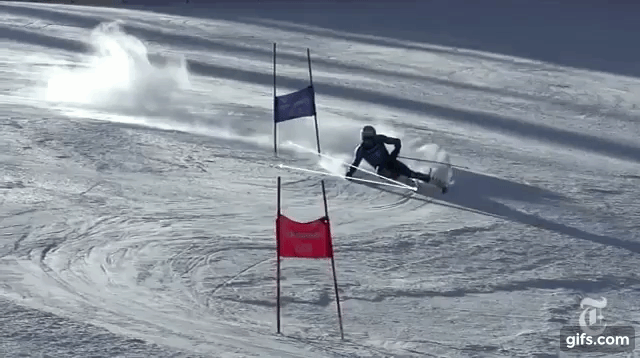I like the concept of an energy free extension, or using the force, or whatever one might like to call it, and practice and try to embrace it all I can. Yes, central to the concept is letting the skis "remain on course" or continue to carve into the hill for a short time after the body is no longer restrained, and has started travel down the hill away from the skis (crossover or crossunder, again whatever one might like to call it). Just because edge angles have started decreasing doesn't mean that the skis have to stop carving, that the old turn has to end right away. They can remain engaged in the snow, albeit less strongly, and should be able to continue in the old turn until they reach flat.
But none of this answers the question of what leads to the hips releasing. I do think some action of the feet and legs is necessary--and not a split second later. I work on triggering it by starting to relax the old outside leg.
What I got (and applied) from the TG vid (in my own words so blame me if I have it wrong).
This assumes that the turn is progressing and we have pressure from the outside ski. We already be flexing a little to manage that pressure and we are angulating to balance against the changing forces as we come out of the fall line. Further, when we transition it's going to be a flex of both leg.
The important thing is to get the main mass (the body) completely across the feet. Releasing at the ankles tends to leave the body behind and still on the merry-go-round of the last turn. Releasing just at the knee tends to put us back instead of moving with the ski.
For me releasing at the hip is a timing thing. At that point I have the option to stop angulating further, stay laterally balanced and ride the turn back up the hill, continue to increase angulation and hold the turn until the body topples anyway or get off the merry-go-round now.
Maybe it doesn't hugely matter if it's hip/flex legs or hip and flex legs simultaneously as long as it is done in close sequence. Getting the body across the feet. Give it a go. It's probably easier to use the stretchy band at home - none of the on-snow distractions. It was one of the things I worked on last Oz season. (Also worked plenty on just flexing the outside leg to release.)
BTW pretty sure this is what Takao is talking about in this clip. (4:25 "very small, very small movement.....and from hip joint, not subtalar joint") (IMHO this is different from his discussion elsewhere about the hip coming around until the fall line.)


